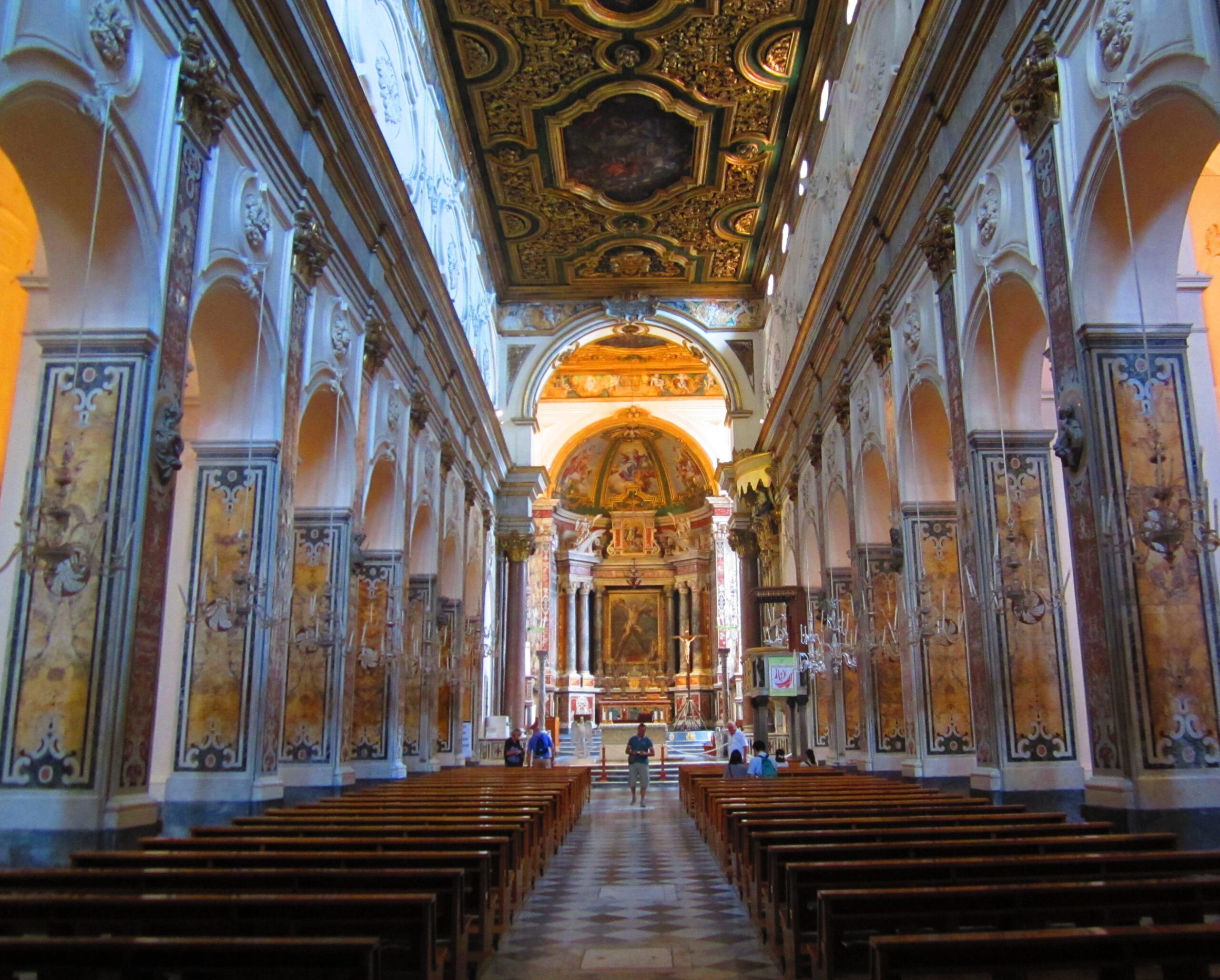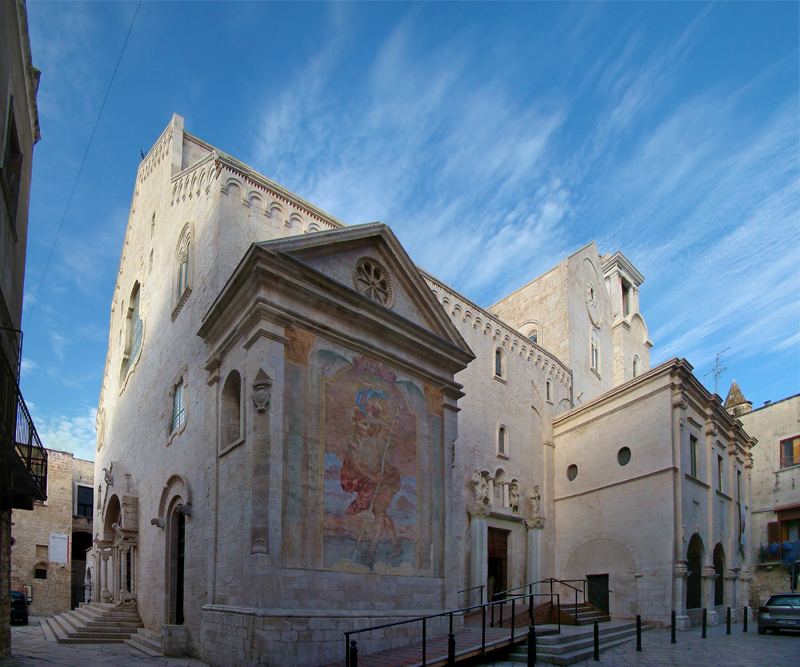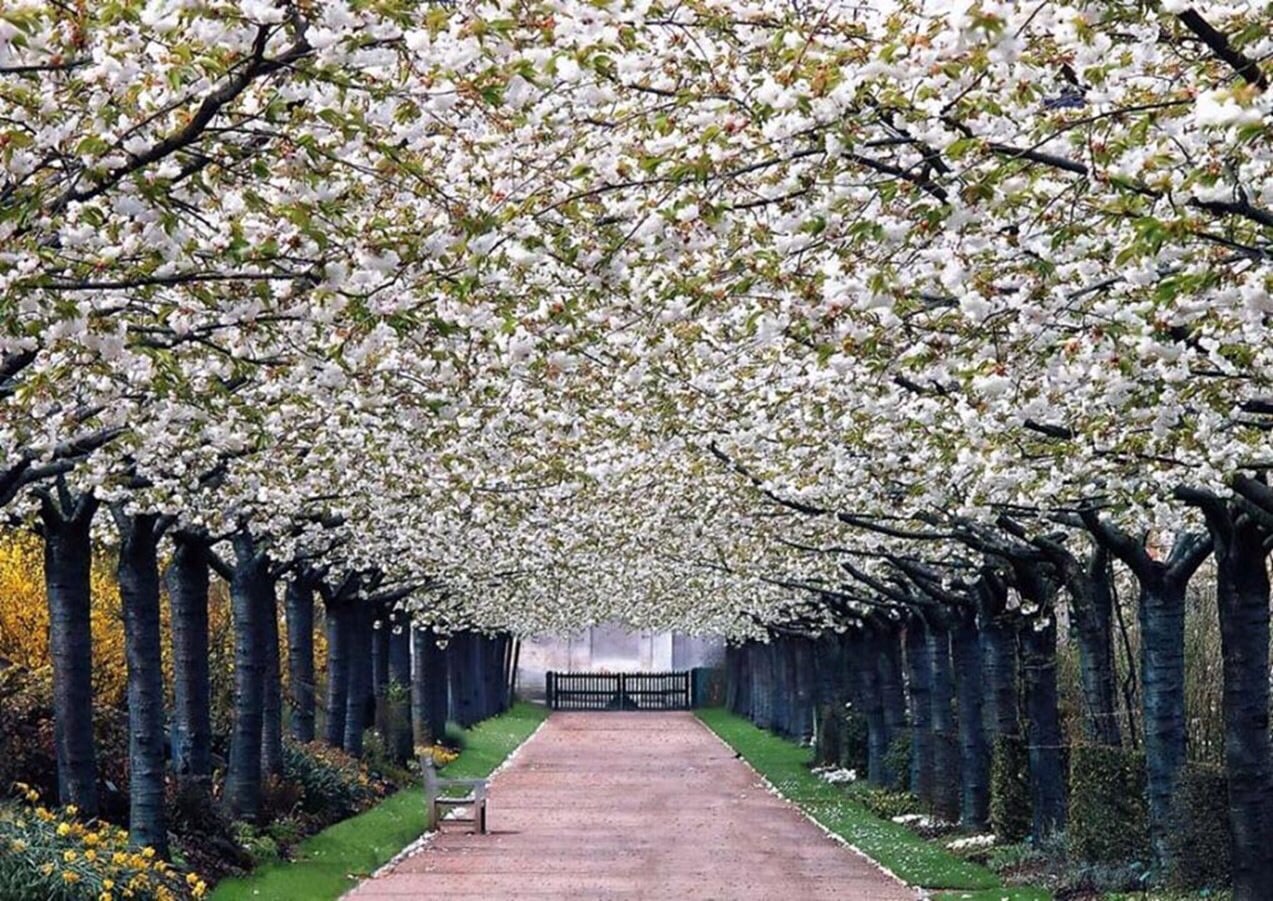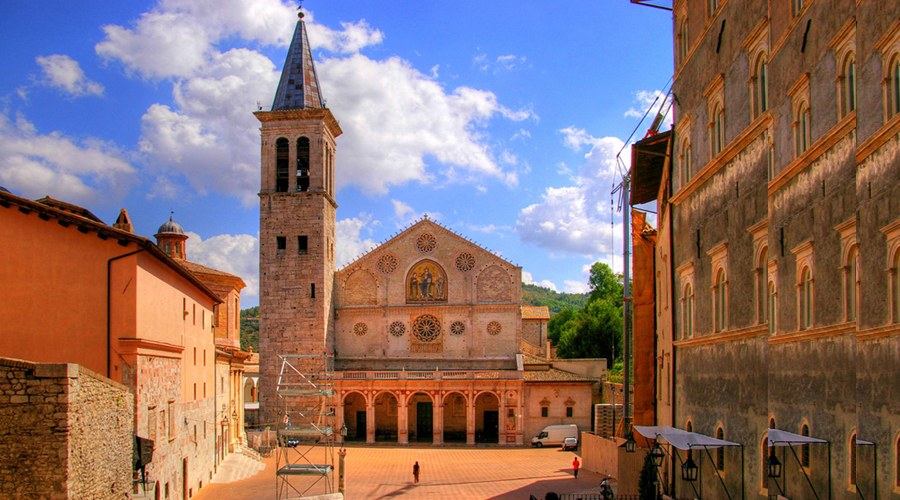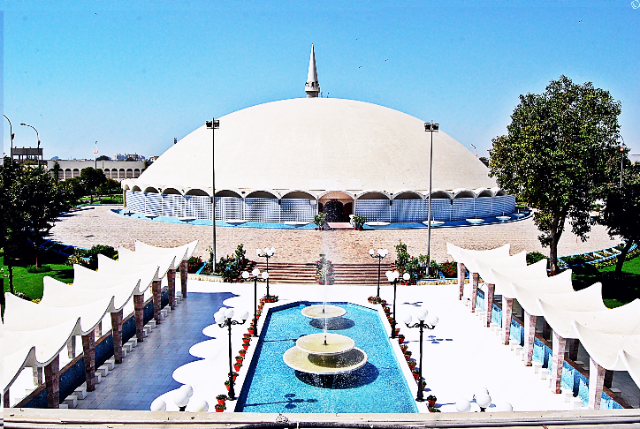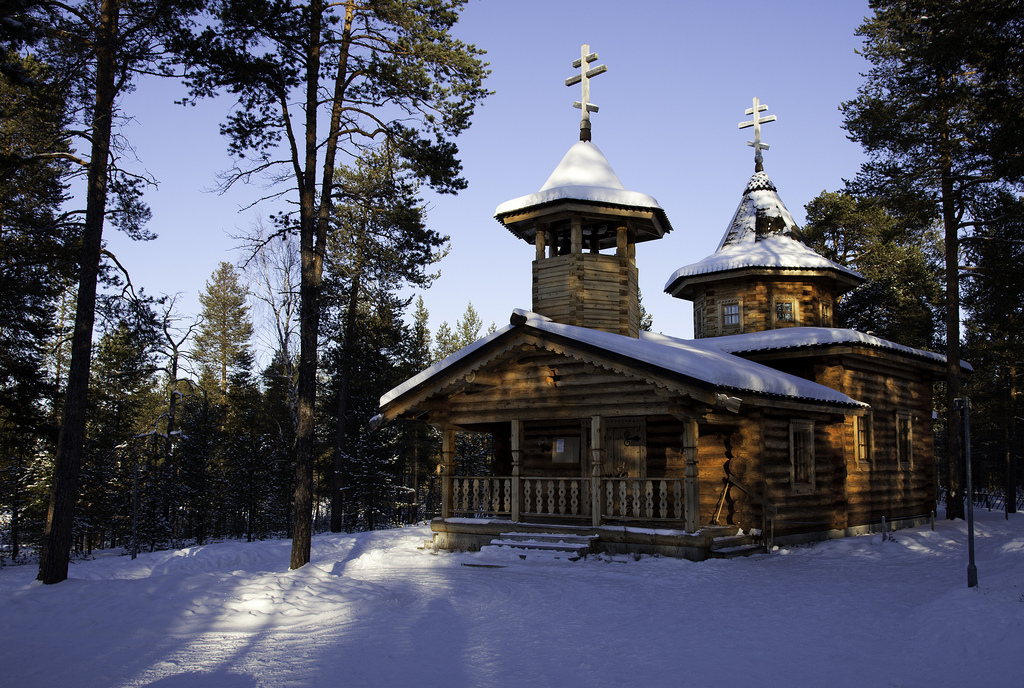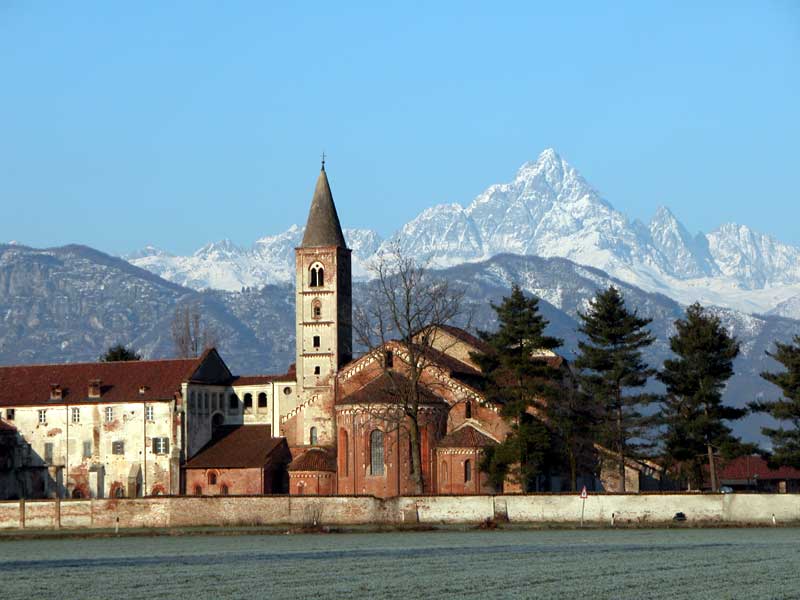The cathedral, dedicated to St. Andrew, was built in the 9th century, when the Maritime Republic began to establish itself as a trading power. It was completely renovated in 1203, in the Arab-Norman forms introduced by the conquerors. Remodeled around 1570, it was rebuilt in the 1800s after a disastrous mid-century collapse.
Towering over the coastal town, at the top of a striking flight of steps, is the mosaic, rich in form and bright colors, covering the facade of the Cathedral, and representing Christ enthroned amid the Evangelists.
The Cathedral has a splendid Romanesque bell tower, finished in 1276, covered with mosaic tiles and restored in 1929.
Beyond the portico is the bronze front door to the cathedral, which came from Constantinople as a gift from an Amalfi patrician.
The interior of the cathedral, with its coffered ceiling, is marked by a central nave, characterized by the large wooden Crucifix from the 13th century; above, however, on the altar, is the painting of the Martyrdom of St. Andrew; two majestic columns of Egyptian granite support the triumphal arch; further on are two Tortile Columns and the two Pulpits.
In the left aisle is the Mother-of-Pearl Cross, brought from the Holy Land by Bishop Marini; next to it is the Baptistery in Egyptian red porphyry, and, going down the aisle, in the side chapels some Canvases by Sylvester Mirra and his Pupils.
In the right aisle we find the 16th-century Reliquary Bust of St. Andrew and, on the door, a large canvas depicting St. Andrew and St. Matthew.
The oldest element of the Amalfi Cathedral is certainly the Basilica of the Most Holy Crucifix, built before the year 833, next to which, in 987, rose the present Cathedral.
Admire the women’s gallery, the ancient columns of the original structure, and two small chapels frescoed with Scenes of Miracles and Effigies of Saints.
Display cases in the center of the hall house the Diocesan Museum, in which the Cathedral’s Treasury is on display: an Angevin Mitre from 1297, embroidered with gems, gold, enamels and a "pavè" of 19,000 beads; a Chalice chisel in gilded silver from the first half of the sec. 14th century; an 18th-century Chinese Carrier; a magnificent Collar of the Order of the Golden Fleece; rare pieces of silverware of the Neapolitan school; and the magnificent Falcon derived from a 15th-century Venetian galley.
Not to be overlooked are a wooden statue depicting a Madonna and Child, and fragments of the original mosaic of the cathedral’s facade. Last but not least is the Paradise Cloister, built between 1266 and 1268 and intended as a cemetery for Amalfi nobles.
Arabic in style, decorated with interlaced arches on marble columns, it preserves inside stone relics, sarcophagi from different periods and six patronal chapels built between the 12th and 14th centuries.
Precious then is the magnificent Crypt where the body of St. Andrew,the first disciple of Jesus and patron saint of Amalfi,is kept, whose remains arrived in Amalfi in 1208, brought from the East during the Fourth Crusade.
The Crypt is now in its Baroque form dated in the 1600s with scenes from the Passion of Jesus set among rich and elegant stucco decorations.
The central altar, in fine marble, is the work of Domenico Fontana. The large bronze statue is by Michelangelo Naccherino of Florence (1604).
Next to it are marble statues representing St. Lawrence and St. Stephen. The sacred relics are enclosed in a silver urn placed under the central altar, the work of Domenico Fontana.
